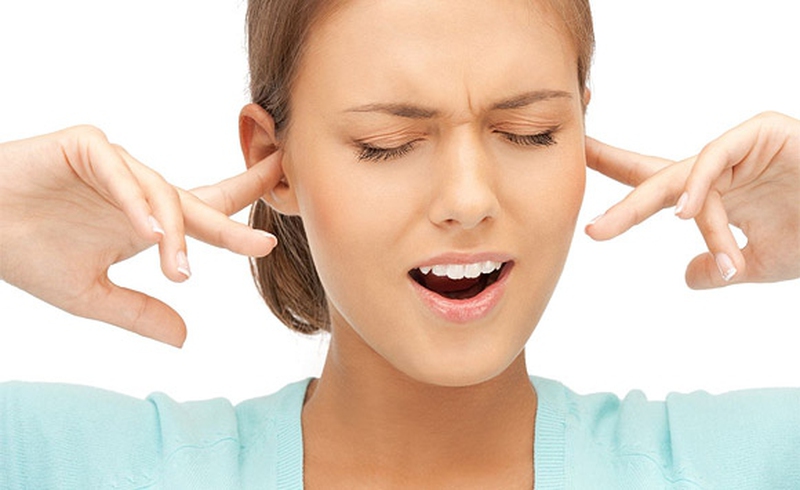Fluid in ear, also called serous otitis media or otitis media with effusion, usually is the end result of an ear infection. However, this condition can occur any time whenever the auditory tube is impaired. While anyone can get fluid in their ears, children are more susceptible due to their auditory tube’s anatomy. According to the American Academy of Pediatrics, 2.2 million children have ear infections every year with 90% of children experiencing fluid in ear before they reach school age.

Causes of Fluid in Ear
Swollen or blocked auditory tube
Fluid in ear can happen anytime if the Eustachian tube is impaired, which drains fluid to the back of the throat. In these cases, the fluid is trapped in the ear. Besides this, allergies or colds can also trap fluid in ear.
Causes of fluid in ear in children
Otitis media with effusion or OME most commonly occurs in either winter or early spring, but it can happen any time of year. While it can affect people of any age, it often happens in children under two but rare in newborns. So why do younger children get OME more often?
Younger children’s Eustachian tube is shorter, more horizontal, and straighter that gives bacteria easy access to the eardrum.
Young children also get more colds since it takes time for their immune system to both recognize and ward off cold viruses.
The tube is also floppier and has a tinier opening that makes it easier to block.
Watch the following video to find answers for “How does fluid get into the middle ear?" and "Why can’t middle ear fluid be left alone?”:
Treatment for Fluid in Ear in Children
In general, physicians will recommend the following two treatments: watchful waiting and medical treatment:
Watchful waiting: As most fluid in ear will clear up on its own, most healthcare providers will not treat OME in child at first and will generally wait two to three months before rechecking. A doctor may suggest waiting and watching for about eight to twelve weeks to see if the condition worsens and if it does, they may start medical treatments.
Medical treatments: If the problem has not cleared up on its own, then the doctor may try antibiotics. When ear infections have not cleared up in 4 to 6 months, doctors will test for hearing loss. And if it is significant, antibiotics may be prescribed and ventilation tubes may be placed. A final solution that may be approached if nothing else works is removal of the adenoids in order to restore proper function of the Eustachian tubes.
General Treatments for Fluid in Ear
Take advantage of pressure
Put your index finger in your ear, move it upwards, and then move it gently around until you have created a vacuum. Try to suction the fluid out.
An alternative to this is the Valsalva maneuver. In this method, take a breath, holding your mouth closed and your nose plugged. Force air up into the Eustachian tubes by blowing out and tilt your head downward with the problem ear facing toward the ground. If you feel a pop, then this method has worked.
Use gravity
Stand on one foot with your head tilted on the side that has fluid trapped. Hop on one foot, keeping your head tilted toward the floor. Hop slowly to keep your balance.
Another way of doing this is to rest your head on a pillow. Lie down on your side with the ear that has fluid in it resting on the pillow. Both of these methods should allow the fluid to drain out of your ear.
Chewing
By chewing on gum or food, or by moving your jaw as if you are chewing, you open up the Eustachian tubes. Try tilting your head as you make the chewing motion in order to free up the tubes and let the fluid out with the help of gravity.
Use a blow dryer
Turn on your blow dryer to the lowest setting and gently send some air into the ear. This can help dry up some of the fluid that is caught in the ear. Never use the high setting on the blow dryer and keep it far enough away from the ear to prevent injury.
Take OTC medications
If fluid is still not cleared up despite any of previous methods, it may be time to consult your physician for medication. Usually they will prescribe an alcohol-based ear drop or some over-the-counter medicines. These medicines are generally a stronger decongestant or an antibiotic which can work in 10 days or less. However, sometimes stronger medicines need an additional week or so to clear it up.
Opt for surgery
While surgery may seem like a drastic measure, sometimes it is the best option for an ear infection that will not clear up. And in adults it is far less drastic than in children. Generally, tubes are inserted through an incision in the eardrum to drain the fluid. These tubes only need to be in the ear for 4 to 6 weeks. Once all the fluid is gone, they are removed and the ear drum will heal quickly.

View All Comments /Add Comment